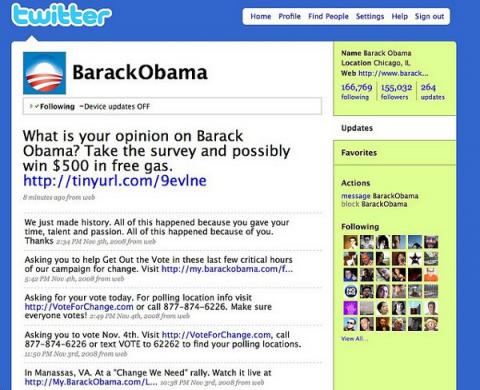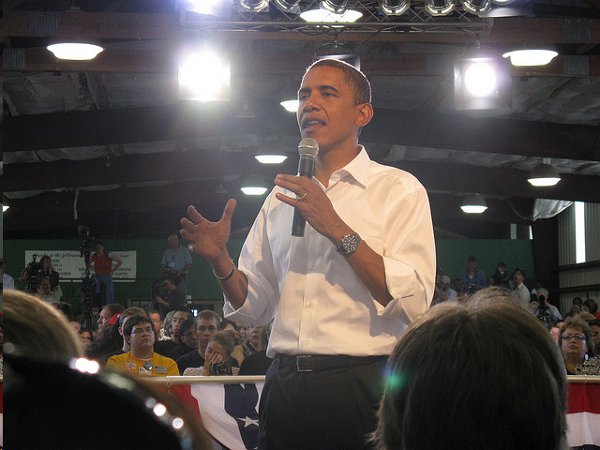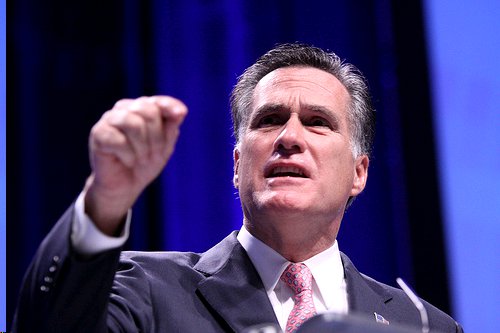#IHeartPresidentialElections: Obama, Romney and the Social Media War

A presidential election is like a war; neither is easy to wage and, in the end, there can only be one winner. Both sides must show up with their ‘A’ Game in tow-- the biggest, newest, and best technology, the absolute smartest people manning the controls. This has always been the case in American politics, and it’s still the case now, as the leaves begin to turn on a brand new election season.
The face-off between President Barack Obama and his Republican challenger, former Governor Mitt Romney, will be the 57th quadrennial election in the history of the
How so, you might ask? Well, just take a look at what you are doing this very instant. You are viewing these words, dear reader, not from a newspaper or some other form of printed media, but from a computer screen. After you finish reading, you can tweet this article to your friends, or even ‘Like’ it on Facebook. And, as if that isn’t enough, right beside you is most likely your Internet-ready smart phone (gone are the days when all a phone did was simply make a call). It’s not easy to navigate this dense, ever-changing landscape of technology; however, just like the rest of us, you do your very best to keep up.
These days, it’s no different for a presidential candidate. It’s the 21st century in
In1960, Americans turned on their televisions for the very first time to watch a presidential debate. The first televised debate in history found Senator John F. Kennedy going head-to-head with Vice President Richard Nixon, and a record number of Americans tuned in to watch the drama unfold right before their eyes. Tired from the campaign trail and recovering from a recent illness, Nixon notoriously refused make-up and other preparations for the event. His opponent, however, was all-too ready for his big moment in front of the nation; fresh-faced, tan, and sharply dressed, the handsome Kennedy quickly left the sweating, bumbling Nixon eating his dust. And, while that particular election turned out to be one of the closest races ever, many attribute JFK’s spectacular appeal during the debates to be a key turning point in his eventual victory.
History repeated itself four years ago in 2008, when a young, charismatic senator from

Four years later, however, the odds are not overwhelmingly in the President’s favor, with a still-poor economy looming in his shadow and an opponent who spends much time and energy going over some of the less-than-stellar details of the President’s record with a fine-toothed comb. What will Barack Obama need in order to make lightning strike twice, and what will it take from Mitt Romney to throw a major wrench into the President’s plan? The answer is the same now as it was in both 1960 and 2008: get smart, get connected, and get people voting.
Now, with two months left before
Once again, the Obama campaign has done a great job of engaging voters through the two most popular social media platforms, Facebook and Twitter, with Romney right on his tails. Ironically, the candidates’ official sites appear to be nearly identical to each other; loaded with pictures, facts, and links for visitors to click if they happen to be feeling generous, they seem more like personal blogs than campaign sites.

This sort of behind-the-scenes, intimate approach works well for both candidates. President Obama’s Twitter account, for example, often feels like an extension of his own diary. Recently on his birthday, the President (or, more likely, his people) tweeted an old picture of himself and his family in front of a birthday cake. It may not be an economic statistic, but it certainly tugs on the heartstrings-- and voters are people, after all.
Mitt Romney also sends regular tweets, Facebook status updates, and emails. As a father to five sons, Romney has five built-in campaigners that regularly connect with supporters across all aspects of social media. Plus, now that Paul Ryan is a part of
Where the President also clearly pulls ahead is in the battle of the wits: the world of television satire. Mitt Romney is often parodied in Saturday Night Live sketches as stiff and robotic, incapable of connecting with the average, middle-class American .
Of course, we all know what Tina Fey’s spot-on impersonation of Sarah Palin did for McCain’s chances back in ’08; by choosing cutesy, simpleton Palin as his running mate, McCain made it all too easy for the media to exploit the fact that his campaign had morphed into a real-life parody of itself. And while the well-mannered Paul Ryan may be a far more obvious choice of potential V.P., that doesn’t mean he’s exempt from the glare of the satirical spotlight. Thanks in part to a political youth culture formulated mostly by Jon Stewart and Stephen Colbert, the “Paul Ryan Gosling” Twitter account is currently one of the Internet’s most winning-- and hilarious-- joke accounts. Based on the silly, nonsensical “Hey Girl” meme created by devoted Ryan Gosling fans, the young politician and the dreamy actor are fused in one-liners such as, “Hey girl, I didn’t disclose my million-dollar trust fund. But I’m happy to disclose my love of warm sponge baths.”
So if a presidential election is like a war, then for the voter, choosing a candidate is a lot like choosing a date. It doesn’t matter if a person is attractive, or accomplished, or on paper seems like a really great fit. In the end, what is really comes down to is a connection -- either it’s there, or it isn’t. Obama has two months left to show America that the spark is still alive, while Mitt Romney will work on convincing the nation that it’s time to break up and move on to something better. In the meantime, Americans are weighing in by plugging in, and in today’s world of social media, we don’t have to miss a single thing.
Author Bio:
Loren DiBlasi is a contributing writer at Highbrow Magazine.
Photos: Adam Conner7, Becky F, Gage Skidmore (Flickr, Creative Commons).































































































































































































































































































































